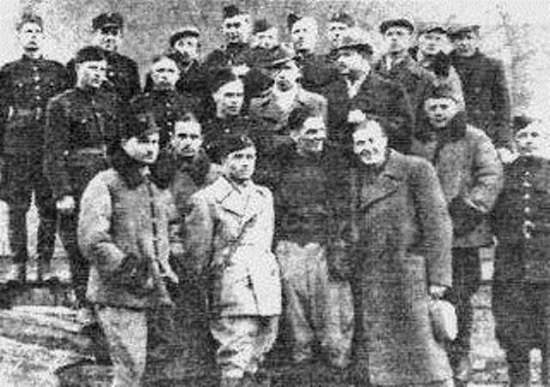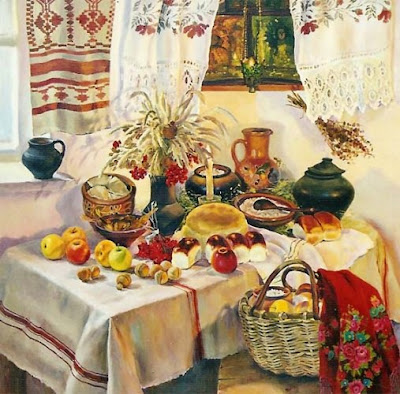The independence struggle of Carpathian Ukraine
The appearance of Carpathian Ukraine in 1938 met some hostile countries, especially Hungary and Poland. The first openly sought to annex the land. But the Polish government was against the formation of Ukrainian statehood in Transcarpathia in any form. He saw in this a threat to their rule in Western Ukraine, the population of which could follow the example of Transcarpathian brothers. Meanwhile, Adolf Hitler and Benito Mussolini supported aggressive desire their Hungarian allies. November 2, 1938 was organized by the so-called First Vienna Award of territorial claims of Hungary to Czechoslovakia, Hungary resolution which was passed 12% of the 97 towns and Transcarpathia.
The international situation Carpathian Ukraine was complicated by the day. Hungary, whose territorial claims were not fully satisfied, continuously carried out anti-Ukrainian diplomatic demarches, sent in the Carpathian Ukraine provocative terrorist groups. She was sympathetic curative Poland. The then regime in Poland could not accept the existence of a cell next to Galicia Ukrainian sovereignty and also sent here their sabotage groups to sabotage and terrorist attacks.
 |
| Carpathian Ukraine |
On the night of 13 to 14 March 1939 again attacked Hungarians in the Carpathian Ukraine. But this time to the gangs of terrorists added regular troops. Hungarian troops were general offensive in four directions: 1st – Perachyn-Velykyi Bereznyi-Uzhok; 2nd – Svaliava-Volovets; 3rd – Irshava-Kushnitsa; 4th – Sevliush-Hust-Solotvino-Yasinia. Resistance attackers did archers "Carpathian Sich" and of the Czech army that tried to break into Slovakia.
While in Hust was a historic session of Parliament – the Soim (March 15, 1939), which was declared the independence of Carpathian Ukraine, “Carpathian Sich” together with local volunteers and Ukrainian officers of the Czechoslovak army organized the defense of the approaches to Justo. March 15, 1939 under the leadership of Lieutenant Ivan Chuchko and teachers' seminary professor Yakiv Golota soldiers of the “Carpathian Sich” kept the defense of Sevliush (now Vynogradiv) towards Hust. By 14 o'clock the defenders repelled several attacks Hungarian troops, and later under pressure from enemy forces which dominated much and who used to attack tanks, armored vehicles, aircraft guns and heavy machine guns were forced to retreat to the Great Copan.
The heroic defense of Sevliush was provided a historical session of the Soim. However, no country in the world recognized the Carpathian Ukraine. Due to the approach of Hungarian troops in the capital in the morning March 15, 1939 the evacuation of government and public institutions of Hust. On the journey that connected Hust with Large Kopania organized defense line that stretched along the railroad tracks Rokosovo-Veretsia-Large Kopania and along the Tisza 3-4 km and consisted of two hundred soldiers armed with light machine guns, rifles, hand grenades and pistols. Against them stood regular Hungarian army with tanks, armored vehicles, planes, mortars, guns and heavy machine guns. Here from 10 AM to 2 PM March 15, 1939 was the largest battle in the military campaign to capture the independent Carpathian Ukraine Hungary – Battle of Krasne pole.
After a brief half-hour battle soldiers of the “Carpathian Sich” under heavy artillery fire were forced to retreat to the railway station on the outskirts of Large Kopania and carry out machine-gun fire on enemy positions. At 14 o'clock the offensive of Hungarian troops was intensified, it made a fighting retreat soldiers of the “Carpathian Sich” to Hust. Retreat to the capital covered 20 soldiers of the “Carpathian Sich” under the command of Alexander Blestiv-Haydamaka. This defense easily move almost lossless railway bridge and joined to the main column of the “Carpathian Sich”, that retreated in the direction from Hust to Large Bychkiv, hoping to organize there a second line of defense against the Hungarian army.
Notice about battle of Krasne pole caused considerable resonance. Hungary eyes democracies faced aggression against the young Ukrainian state. According to Hungarian data in battles in Red 230 was killed soldiers of the “Carpathian Sich”, Ukrainian soldiers of Czechoslovak army and volunteers, mainly seminarians and scouts. Losses of Hungarians were 160 dead and about 400 wounded. At 16 o'clock in Hust came first units of Hungarian army. The soldiers of the “Carpathian Sich”, who did not back off from the main forces organized resistance in the city.
In the evening March 18, 1839 aggressors occupied the main areas of Transcarpathia, while fighting in the mountainous part of its continued until May. Overall Carpathian Ukraine defended from aggressors longer than France or Poland after the onset parts for weapons of German Wehrmacht. Not to mention Czechoslovakia, which does not make any shot in his defense?
After the Hungarians to the Polish border where they were happily greeted by Polish troops, if need be ready to help the invaders. On the northern border of the Carpathian Ukraine sounded fun, «Polak, Węgier, dwa bratanki, i do szabli, i do szklanki! // Lengyel, Magyar – két jó barát, együtt harcol, s issza borát!». Silver Land as poetically called the Carpathian Ukraine, with the blessing of Adolf Hitler was trampled bloody heel of the Hungarian pro-fascist regime of Miklós Horthy. He was assisted by Poland and Romania.
During his own short reign of Prime Minister and President of Independent Carpathian Ukraine Augustine Voloshyn mercilessly fought with all anti-Ukrainian manifestations, and rightly so. Why young Ukrainian state various separatist movements and imperialist as destroying the essence of independence? Of course, why not! Young Ukrainian state in the valley of the river of Tisza, river of Latorytsia and river of Uzh, by their nation on their feet. However, this prevented invaders neighbors Hungary, Poland and even Romania.
 |
| Carpathian Sich soldiers |
Transcarpathia was divided into three occupants’ zones: Uzh, Beregovo and Maramorosh. Everywhere reined the Hungarian authorities and the Hungarian language. Discontented with the regime fighters were sent to concentration camps in the village curve in the village Chynadiyevo, Turya Remety, Perechyn and Budapest. In Mukachevo Palace of Kovner and Schönborn palace Ukrainians prisoners were tortured in special chambers interrogation. All prisons were overcrowded.
Meanwhile, in Transcarpathia plummeted standard of living, most live in poverty. Increased prices were introduced rationing food distribution and industrial products. Three days a week was forbidden to sell the meat. For non-binding supplies of agricultural peasants punished by imprisonment up to three years. Widely used forced labor. Food, raw materials exported from Transcarpathia to Hungarian Government by echelons. From the first days of the occupation of the inhabitants of Transcarpathia do massive resistance to invaders, which was a continuation of war of independence Ukrainians.
The year ago, in Transcarpathia the Ukrainian national trend was organized an active resistance. The general leadership of this movement in Hust in 1940 headed by Dmytro Bandusyak, Mykola Oros and Alexandr Tsuga, who created the Territorial Committee of Resistance against the Hungarian occupation. The Territorial Committee of Resistance supported by the Ukrainian organizations from Bratislava, Krakow, Lviv. More Ukrainians politicians from Poland and Slovakia sent him instructions, printed materials, leaflets. Organizers motion carried propaganda, collecting weapons, creating guerrilla, gave organ "Chyn".
In March 1941 the one member of the Territorial Committee of Resistance named Ivan Romanets established blue-yellow national Ukrainian flag on Khust Castle, but pulled out the Hungarian flag. During the occupation of Transcarpathia local residents, especially young people, moved into the territory of the USSR and Poland. It was a form of resistance to the occupation authorities. In Budapest issued an order to shoot violators of the border after the first warning. However, all fugitives manual USSR subjected to repression. The verdict of the special meeting by the NKVD defectors sent to labor camps. Over 20 Soviet concentration camps became the last refuge of accidents, many of them died there.
However, despite all the hardships that befell the Ukrainian nation, the memory of heroes free Carpathian Ukraine will live in the hearts of Ukrainian! We all thank to the soldiers of the “Carpathian Sich”, who died for our freedom, for a free Ukraine from Poprad to the Caucasus!
Glory to the Ukrainian Heroes!
by Kalev Korpinen
.jpg)






Коментарі
Дописати коментар